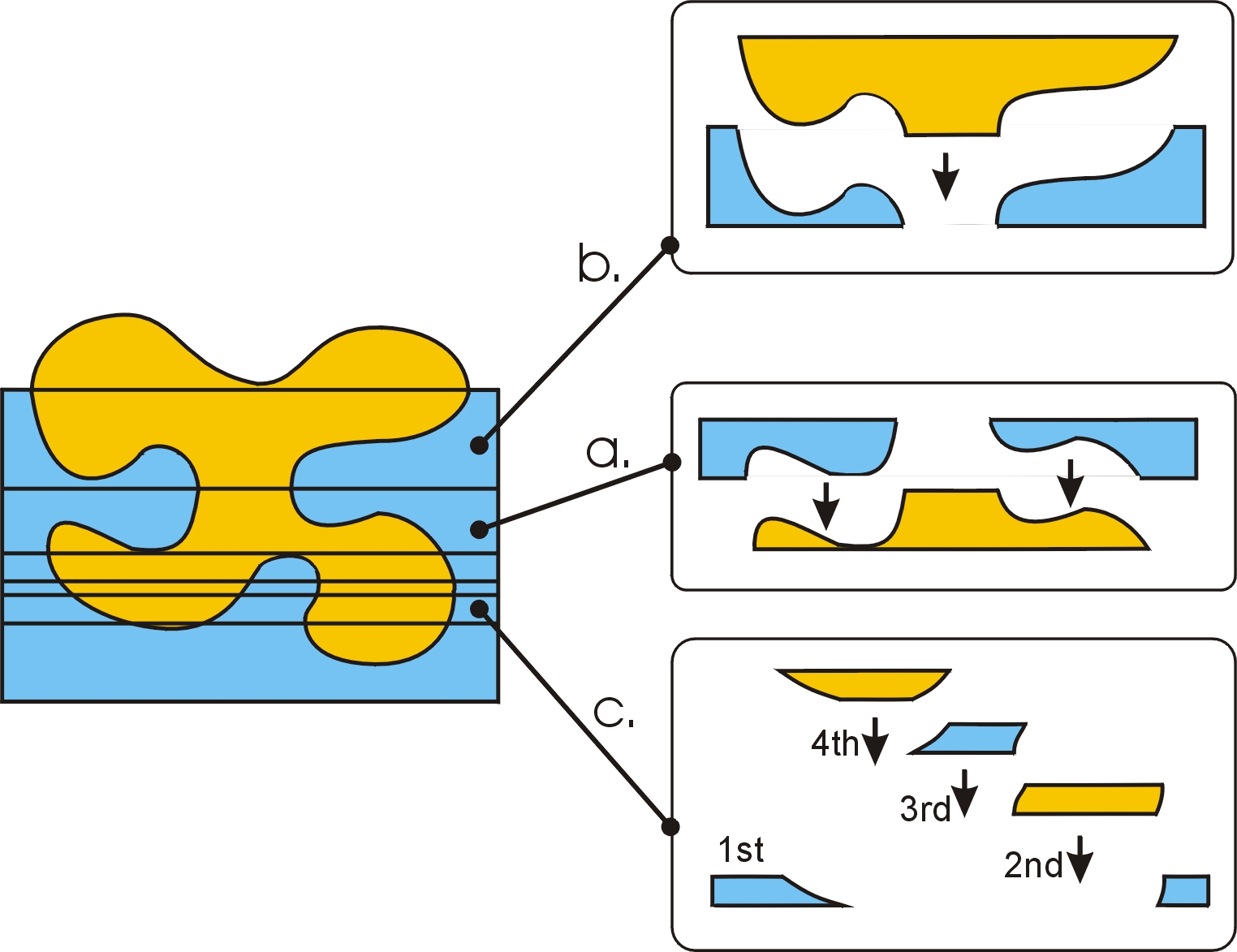
The Shape Deposition Manufacturing Process

Figure 1. Shape Deposition Manufacturing (cross-sectional view)
Most solid freeform fabrication (SFF) systems are based upon a material additive, layered manufacturing paradigm. Computer-aided-design (CAD) models are first decomposed into thin 2-1/2D cross-sectional layer representations, then physical parts are built up in custom fabrication machines, layer-by-layer, using material additive processes. Layers of sacrificial structures are simultaneously built up to fixture and support the growing shapes. While layered manufacturing facilitates rapid prototying of arbitrarily complex shapes, the resulting surface finish and accuracy, which are critical factors for being able to fabricate functional parts, can be compromised by the discretization process. High accuracy and quality surface finishes, required for such applications as custom tooling, precision assemblies, and structural ceramics, are best achieved with material removal processes such as 3 and 5-axis computer-numerically-controlled (CNC) milling. To help address this issue, Shape Deposition Manufacturing (SDM) is a SFF process which systematically combines the advantages layered manufacturing with the advantages of material removal processes (Figure 1). The basic SDM fabrication methodology is to deposit individual segments of a part, and of support material structure, as near-net shapes, then machined each to net-shape before depositing and shaping additional material. This method takes advantage of the basic SDM decomposition strategy which is to decompose shapes into segments, or 'compacts', such that undercut features need not be machined, but formed by depositing onto previously deposited and shaped segments. Each compact in each layer is deposited as a near-net shape using one of several available deposition processes. The thickness of each compact depends not only on the local part geometry, but also on deposition process constraints. After the entire part is built up, the sacrificial support material is removed to reveal the final part.
Shape Decomposition: Unlike most other Solid Freeform Fabrication (SFF) techniques which decompose models into thin 2-1/2 dimensional layers, SDM retains a three dimensional representation of the part and creates variable layer thickness' which are dictated by the geometry of the part. Layer boundaries are strategically inserted at heights where there are transitions between undercut and non-undercut surfaces or where there are changes in material composition. The sequence for depositing and shaping part and support materials therefore depends upon the local geometry as is illustrated in Figure 2.

Figure 2. Shape Decomposition
In general, any shape composed of a single part material can be decomposed into layers that are characterized by one of three categories:
The thickness of each layer and the sequence for depositing and shaping the primary and support materials in each
layer will vary based upon part geometry. For layers in the first category (e.g., layer in Figure 2b), the primary
material is deposited first and then machined. The support material is then deposited then the entire layer surface
is planed; this sequence is illustrated in Figure 3. For layers in the second category (e.g., layer in Figure 2c),
the support material is deposited and machined first; then the cavity created by the support structure forms the
undercut features of the part. Layers in the third category containing both types of surfaces must be further decomposed
into layer segments, or 'compacts', which are deposited and shaped in a sequence such that all under-cut features
(of either the primary or support materials) are formed by the previously shaped non-undercut feature (e.g., layer
in Figure 2b).

Figure 3. Example of a deposition and shaping sequence.
Heterogeneous Structures: In addition to the rapid prototyping of complex shapes, selective additive material processing enables the fabrication of multi-material structures and it also permits prefabricated components to be embedded within the growing shapes as depicted in Figure 4a. Another goal of SDM research is to investigate how the capability to fabricate such heterogeneous structures enables the manufacture of novel product designs. The compact splitting strategy and sequence for depositing and shaping materials for a typical layer of a heterogeneous structure is depicted in Figure 4b. Note how the undercut surface of a compact is formed by depositing onto the machined surface of another compact beneath it.

Figure 4. Multi-material structures with embedded components.